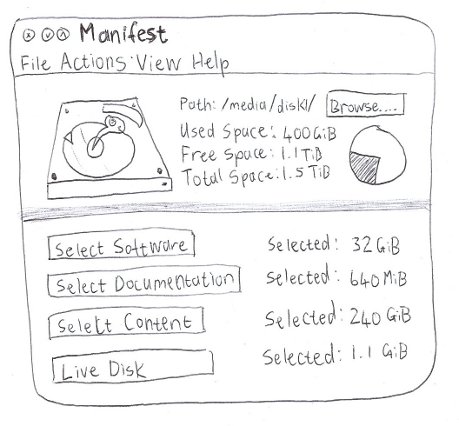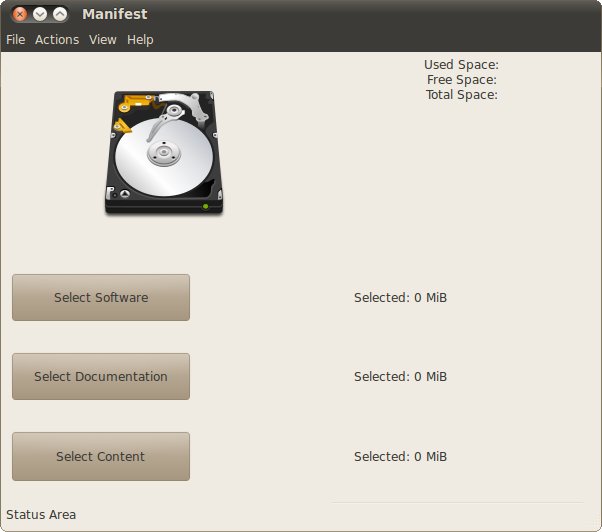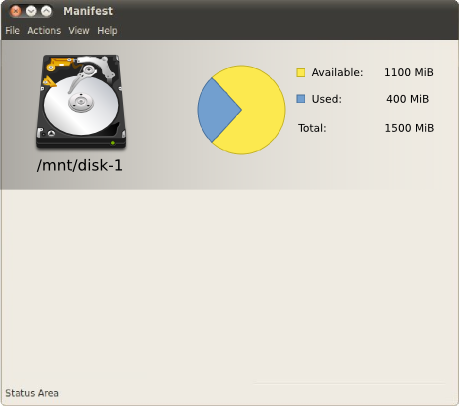Launchpad Entry: ngo-manifest
Created: 2010-05-30
Contributors: JonathanCarter
Packages affected:
See also:
Summary
An application that downloads software, content and other data from a location with a good Internet connection, in order to ship it to a location that may not have a good or cheap Internet connection.
Rationale
Many NGOs work in areas where Internet connectivity might be slow, expensive, censored or otherwise severely limited.
Examples of the above would include rural areas in Africa where connectivity is extremely expensive. While a school may acquire Ubuntu installation media quite effortlessly, installing additional software may be prohibitive due to the high cost of bandwidth. Another case may be where a natural disaster has hit an area, destroying telecoms infrastructure. In these examples, a disk could be prepared with a mirror of useful tools and content that could be prepared in another area or even another country and then shipped off to location.
Use Cases
- Eric needs to visit a disaster location tomorrow and needs to set up a contact center for the area, he has very little information about the area or what kind of infrastructure is available. He's also unsure which software and content may be useful. He uses Manifest to create a mirror in his pocket that allows him to have all of the Ubuntu repositories and a few PPAs available onsite.
- Kyle is installing Edubuntu in schools in Limpopo, South Africa. The only connectivity available here is 3G/HSDPA that costs €0.20 per MB. He creates a mirror on disk using Manifest at a university in Johannesburg and duplicates it on the servers installed at each school he works at, saving the collective schools large amounts of money.
- Kenny is a student at South Park Elementary and doesn't have an Internet connection at home. He uses the connection at school to mirror an off-line version of Wikipedia that he'll share with his siblings and use for doing homework.
Scope
Manifest will download (and probably at some stage sync) repositories such as the Debian and Ubuntu repositories, ISO images, off-line Wikipedia, documentation including howtos and more. In a future version it could possibly integrate with usb-creator-gtk to create a live bootable disk on the media.
Design
UI
Drawing:

Current Code:

Inkscape Mockup (in progress):

A specification should be built with the following considerations:
- The person implementing it may not be the person writing it. It should be clear enough for someone to be able to read it and have a clear path towards implementing it. If it doesn't, it needs more detail.
- That the use cases covered in the specification should be practical situations, not contrived issues.
- Limitations and issues discovered during the creation of a specification should be clearly pointed out so that they can be dealt with explicitly.
- If you don't know enough to be able to competently write a spec, you should either get help or research the problem further. Avoid spending time making up a solution: base yourself on your peers' opinions and prior work.
- Specifications should be written in clear, concise and correct English. If you're not a native speaker, co-editing the spec with somebody who is might be a good idea.
Specific issues related to particular sections are described further below.
Summary
The summary should not attempt to say why the spec is being defined, just what is being specified.
Rationale
This should be the description of why this spec is being defined.
Scope and Use Cases
While not always required, but in many cases they bring much better clarity to the scope and scale of the specification than could be obtained by talking in abstract terms.
Use Cases
Use cases are positive statements which (loosely) conform to a pattern like
- A person and their role
- The objective they want to achieve
- The steps they go through
- The positive result
Specifically, describing the current unsatisfactory state of affairs is not a use case; that belongs in the Rationale section.
Implementation Plan
This section is usually broken down into subsections, such as the packages being affected, data and system migration where necessary, user interface requirements and pictures (photographs of drawings on paper work well).
Implementation
To implement a specification, the assignee should observe the use cases carefully, and follow the design specified. He should make note of places in which he has strayed from the design section, adding rationale describing why this happened. This is important so that next iterations of this specification (and new specifications that touch upon this subject) can use the specification as a reference.
The implementation is very dependent on the type of feature to be implemented. Refer to the team leader for further suggestions and guidance on this topic.
Outstanding Issues
The specification process requires experienced people to drive it. More documentation on the process should be produced.
The drafting of a specification requires English skills and a very good understanding of the problem. It must also describe things to an extent that someone else could implement. This is a difficult set of conditions to ensure throughout all the specifications added.
There is a lot of difficulty in gardening obsolete, unwanted and abandoned specifications in the Wiki.
BoF agenda and discussion
We'll have a first public session on this on the first Monday in UBZ.